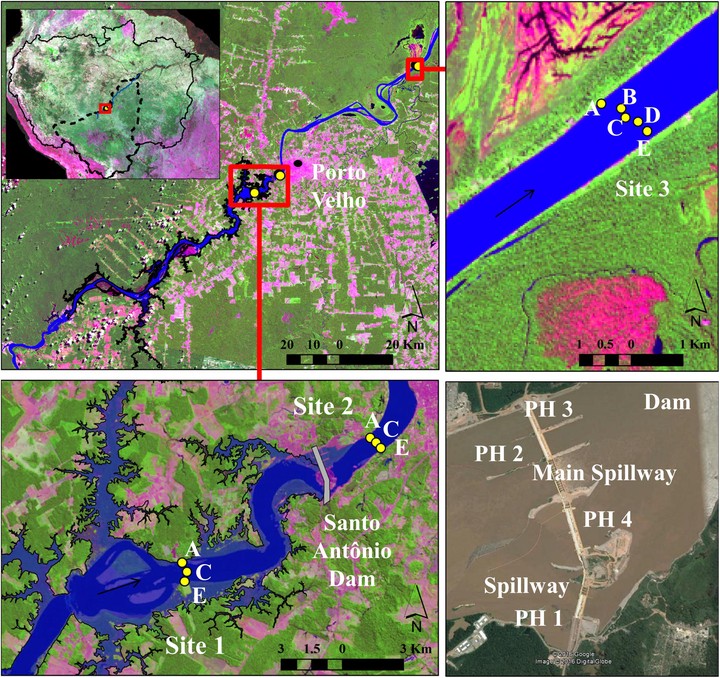Low diffusive methane emissions from the main channel of a large Amazonian run-of-the-river reservoir attributed to high methane oxidation

Abstract
The global development of hydropower dams has rapidly expanded over the last several decades and has spread to historically non-impounded systems such as the Amazon River’s main low land tributaries in Brazil. Despite the recognized significance of reservoirs to the global methane (CH4) emission, the processes controlling this emission remain poorly understood, especially in Tropical reservoirs. Here we evaluate CH4 dynamics in the main channel and downstream of the Santo Antônio hydroelectric reservoir, a large tropical run-of-the-river (ROR) reservoir in Amazonia. This study is intended to give a snapshot of the CH4 dynamics during the falling water season at the initial stage after the start of operations. Our results show substantial and higher CH4 production in reservoirs’ littoral sediment than in the naturally flooded areas downstream of the dam. Despite the large production in the reservoir or naturally flooded areas, high CH4 oxidation in the main channel keep the concentration and fluxes of CH4 in the main channel low. Similar CH4 concentrations in the reservoir and downstream close to the dam suggest negligible degassing at the dam, but stable isotopic evidence indicates the presence of a less oxidized pool of CH4 after the dam. ROR reservoirs are designed to disturb the natural river flow dynamics less than traditional reservoirs. If enough mixing and oxygenation remain throughout the reservoir’s water column, naturally high CH4 oxidation rates can also remain and limit the diffusive CH4 emissions from the main channel. Nevertheless, it is important to highlight that our results focused on emissions in the deep and oxygenated main channel. High emissions, mainly through ebullition, may occur in the vast and shallow areas represented by bays and tributaries. However, detailed assessments are still required to understand the impacts of this reservoir on the annual emissions of CH4.